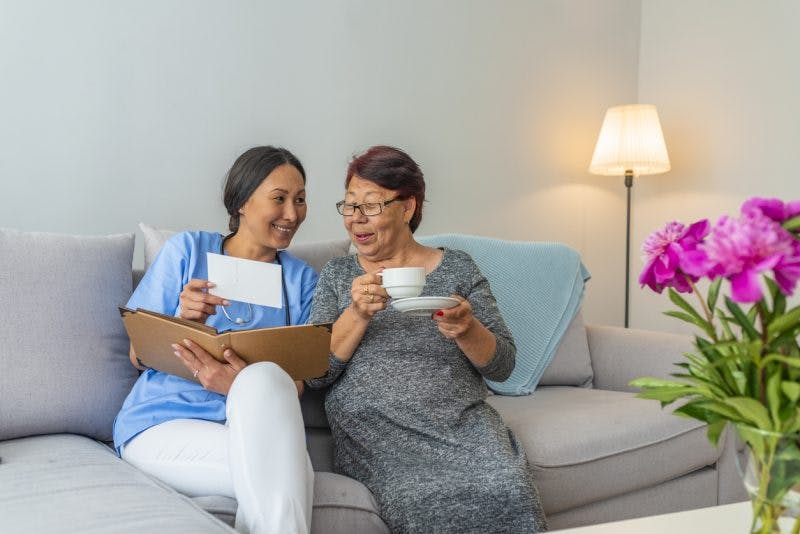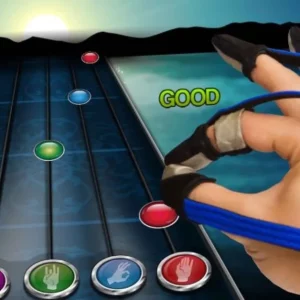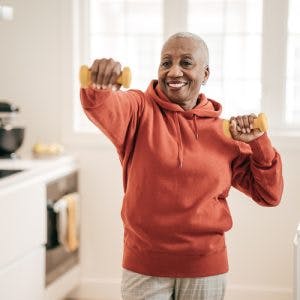Occupational therapy tools for stroke patients are designed to promote independence. Following a stroke, many survivors struggle with completing their daily activities. To improve their independence with everyday tasks, survivors may choose to try different occupational therapy tools for stroke patients to discover which tools are most appropriate for their needs.
While life after stroke can be challenging, there are a wide variety of occupational therapy tools for stroke patients that may give survivors a starting point for making daily activities easier. This article will discuss how to best use adaptive tools for stroke recovery and review some of the most commonly used occupational therapy tools for stroke patients.
Feel free to use the links below to jump directly to any section of this article:
- How can occupational therapy tools support stroke recovery?
- Self-care occupational therapy tools
- Leisure occupational therapy tools
- Rehabilitative occupational therapy tools
How Can Occupational Therapy Tools Support Stroke Recovery?
A stroke can affect many functions, including one’s physical and cognitive skills. Many stroke survivors experience hemiplegia (weakness in one side of the body), difficulty with balance or walking, or challenges with higher level cognitive skills. These secondary effects of stroke, among others, can result in difficulties with carrying out valued daily activities, such as the ability to get ready for the day, complete work tasks, or participate in leisure pursuits.
Repetitive exercises and activities, such as those used during rehabilitative therapies, can promote adaptive brain rewiring through a process called neuroplasticity. This is generally the best way to regain lost functions and independence with valued activities after stroke.
However, recovery after stroke may take many months or even years. During this recovery period, occupational therapy tools for stroke patients can be used to allow survivors to be more independent with their daily activities.
To effectively promote recovery, these tools are generally intended to be used only temporarily. Overreliance on occupational therapy tools for stroke patients can stunt one’s progress toward optimal recovery outcomes. Therefore, occupational therapy tools should be used just as the name implies: as “tools” to make life easier temporarily, rather than as permanent replacements for lost functions.
Although the following list is a great resource, the best way to find out which adaptive tools are best is to consult an occupational therapist. These rehabilitation professionals are experts in the field of promoting independence in daily life activities and can provide survivors with excellent education and recommendations.
Purchasing links for each occupational therapy tool have also been listed here. These links are provided as example products, and can be used as a starting point for finding tools that are best-suited for a survivor’s specific needs and financial situation.
Occupational Therapy Tools for Self-Care
One of the most common concerns after stroke is whether survivors will be able to care for themselves independently. Basic self-care is often referred to as the activities of daily living. This includes tasks such as bathing, grooming, toileting, dressing, and feeding. More advanced self-care tasks, known as instrumental activities of daily living, include activities such as cooking, cleaning, and managing finances and medications.
A wide range of tools have been designed to boost independence with self-care tasks. The following are just a few of the many occupational therapy tools for stroke patients that can promote greater independence in self-care activities.
1. Adaptive Utensils
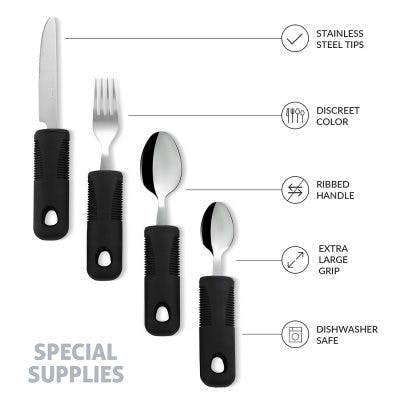
Image from Special Supplies on Amazon.com
Adaptive utensils refer to silverware that has been modified to make it easier for stroke survivors to use. These utensils come in a variety of widths, materials, and weights to allow survivors to choose which is the best fit for their needs. Common adaptive utensils types include utensils with built-up handles, stabilizer spoons, weighted utensils, and angled utensils.
See adaptive utensils on Amazon »
2. Rocker Knives and Adaptive Cutting Boards
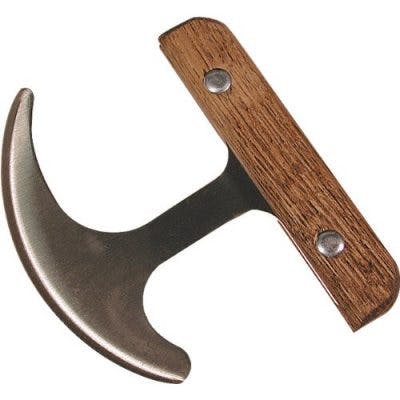
Image from MaxiAids on Amazon.com
Rocker knives and adaptive cutting boards can make it easier for survivors to cut their foods into smaller pieces. A rocker knife is designed to be used with only one hand, making it an excellent option for those with hemiplegia.
An adaptive cutting board is another excellent option to use when chopping foods. It has a number of supports to keep foods in place while cutting, and can be used with a standard knife or rocker knife. While adaptive cutting boards are available to purchase, many thrifty individuals choose to adapt a cutting board that they already own for their specific needs.
Shop rocker knives on Amazon »
Shop adaptive cutting boards on Amazon »
3. Hip Kit
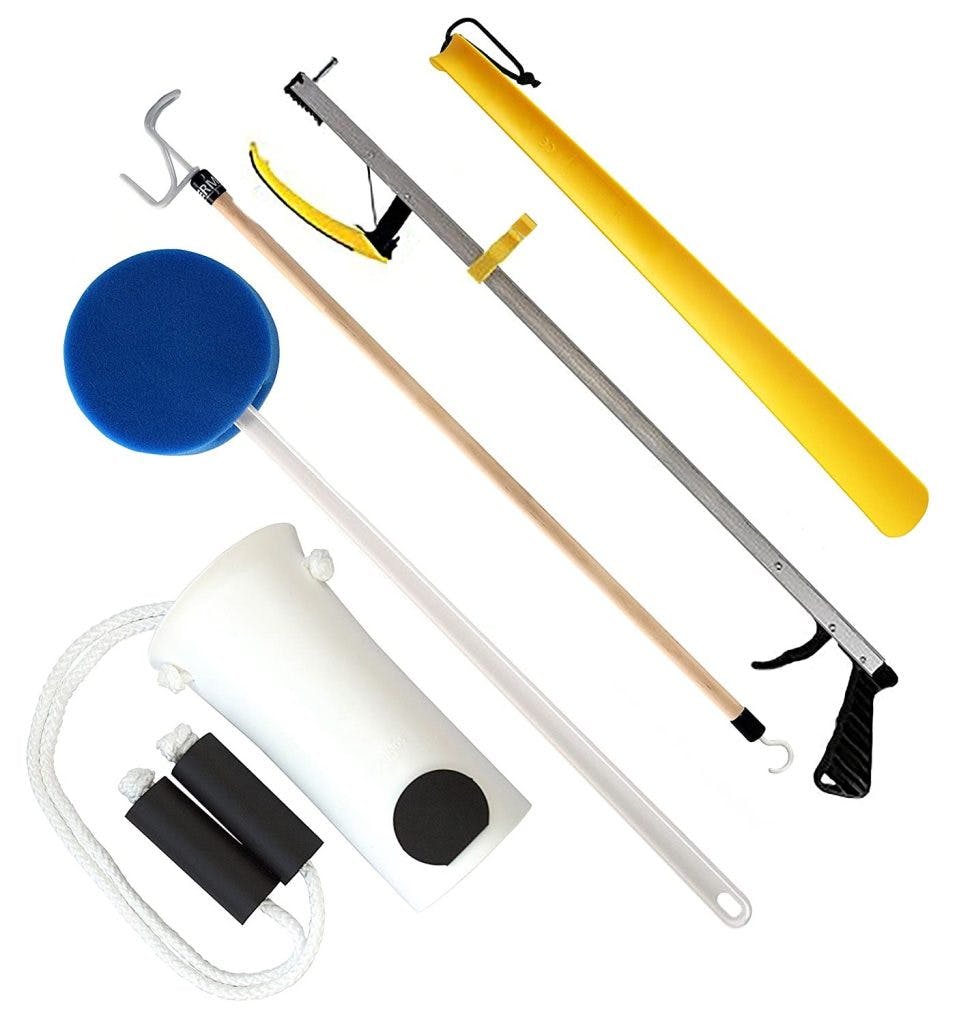
Image from Royal Medicine Solutions on Amazon.com
Although originally intended to help individuals following a hip replacement, the tools in a hip kit can often boost independence among stroke survivors. Hip kits typically include a pant hook, sock aid, and long-handled shoe horn to help survivors dress their lower bodies without having to bend over. A reacher and shower brush are also often included. Tools within the hip kit can be especially helpful for individuals who have limited range or motion or lack balance after stroke.
4. Adaptive Fasteners
Using fasteners, such as zippers, shoe laces, bra hooks and buttons, can often be especially frustrating for survivors. The following occupational therapy tools for stroke patients can help with completing fasteners:
- Zipper pulls: can attach to almost any zipper to increase the surface area, making the zipper easier to grasp
- Elastic shoe laces: instead of switching to Velcro or slip on shoes, elastic shoe laces can allow survivors who are unable to tie their shoes to continue wearing tennis shoes
- Bra angel: can allow survivors to put on a bra using only one hand
- Button hook: may take some practice, but allows survivors to fasten buttons one-handed
Limited range of motion, fine motor coordination and strength after a stroke may make dressing a challenging task. These dressing tools can help stroke survivors regain their ability to independently dress themselves.
Shop elastic shoe laces on Amazon »
5. Toilet Aids

Image from Fanwer on Amazon.com
Toilet aids can help restore independence for wiping efficiently and with dignity. These tools can make the task easier for individuals who experience difficulty bending, reaching, and turning as a result of a stroke.
6. Bathroom Equipment
Shower benches, raised toilet seats, and grab bars are some of the most important occupational therapy tools for stroke patients. Shower benches help survivors conserve energy and reduce their risk of falls while in the shower, while raised toilet seats allow survivors to get on and off of the toilet more easily. Installing grab bars in the areas surrounding the toilet and shower can also promote independence while lowering the risk of falls.
Shop shower benches on Amazon »
Shop raised toilet seats on Amazon »
7. Pill Box Organizer
An important part of taking care of oneself post-stroke is taking medications correctly and on time. Managing medications may be a challenging and time-consuming task for some survivors. It can be hard to remember which medications have been taken each day, especially for those with memory problems.
Pill boxes allow survivors to organize their medications for the week or month. There are also options that provide verbal reminders and differentiate between morning, afternoon, and evening medications.
See pill organizers on Amazon »
While some occupational therapy tools for self-care may be covered by insurance or provided by the hospital, others are not. Although most types of adaptive equipment can be bought online or at a local drugstore, certain types of equipment can be rather expensive.
Survivors can often find a lending closet in their community filled with various occupational therapy tools for stroke patients intended for short-term use. Occupational therapists can help survivors determine which tools may be appropriate for their needs, and may be able to recommend local options for purchasing or borrowing specific tools.
Occupational Therapy Tools for Leisure
Although self-care is an essential part of everyday life, making time for recreation and leisure is also a very important part of recovery. While leisure activities vary widely, engaging in leisure pursuits is an excellent way for survivors to regulate their emotions, interact with loved ones, and have fun.
Here are a few additional occupational therapy tools for stroke patients that can help survivors resume their leisure activity of choice:
8. Book Stand
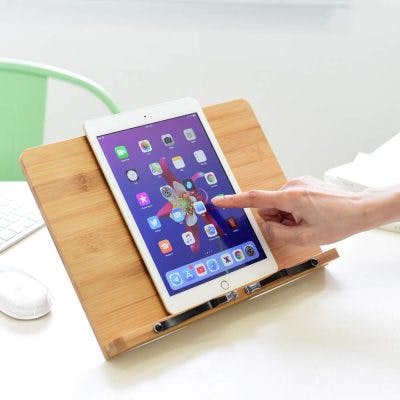
Image from Readaeer on Amazon.com
Some survivors love reading, but have a difficult time holding up a book due to poor grip and/or arm weakness. Book stands come in various styles and can help to stabilize a book for relaxing reading. Survivors with trouble reading due to visual field cuts or hemineglect can utilize the text-to-speech tool on a Kindle or other reading device to continue enjoying books independently.
9. Outdoor Leisure Tools
Adaptive tools exist for many outdoor activities. For example, adaptive fishing sets can provide stability for one-handed fishing despite having limited hand and/or arm function. Track chairs are rentable in many parks throughout the US and can allow survivors with limited mobility to explore off-road trails. Recumbent bikes or hand cycles (arm propelled bikes) can help survivors with impaired balance or lower body strength return to biking. These are just a few of the many adaptive tools for outdoor recreation.
Shop adaptive fishing sets from Handi Accessories »
See list of parks with rental track chairs »
Shop adaptive bikes on Amazon »
10. Video Gaming Tools
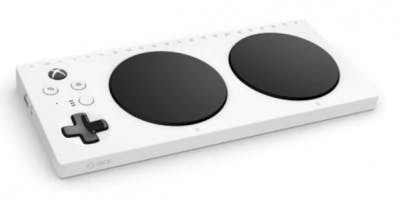
Image from Microsoft.com
Survivors with limited fine motor coordination or hand mobility may find it difficult to play games. Xbox has designed an adaptive controller specifically for individuals with limited mobility to return to gaming. These adaptive controllers can also be customized to best fit a survivor’s needs.
Shop adaptive controllers from Microsoft »
11. Tools for Card and Dice Games
For those who prefer card or dice games, an adaptive dice roller, automatic card shuffler, or card holder may be helpful. These can help individuals with limited fine motor coordination or hand mobility to continue playing games independently.
Shop adaptive dice rollers on Amazon »
Shop automatic shufflers on Amazon »
12. Art Tools
Creative and artistic endeavors may also be challenging for stroke survivors with limited fine motor skills and upper body mobility. Adding built-up handles is an easy way to make drawing or painting utensils easier to grasp. Furthermore, using an easel may help to stabilize the hand and wrist of individuals with poor coordination to make lines smoother and more accurate.
Shop built-up handles on Amazon »
As can be seen, the possibilities of occupational therapy tools to promote independence with leisure pursuits is endless. Consider discussing specific leisure goals with an occupational therapist to learn which tools may be most effective.
Occupational Therapy Tools for Recovery
While the occupational therapy tools for stroke patients listed above focus on ways to compensate for lost functions, there are some tools that can help to boost recovery. These tools target regaining lost functions by activating neuroplasticity (adaptive brain rewiring) through consistent, repetitive practice.
The following stroke rehabilitation tools are designed to be interactive, engaging, and motivating options to continue with occupational therapy exercises and activities at home:
13. FitMi Interactive Therapy

The FitMi Home Therapy Program is a great tool to improve arm, leg, hand, and core strength and mobility after stroke. It can adapt to the skill level of the survivor, even if they have limited movement. This program is an excellent way to continue working on regaining motion, coordination, and strength following stroke.
14. MusicGlove Hand Therapy
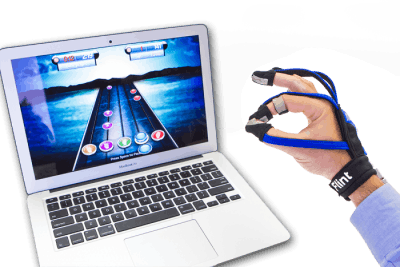
The MusicGlove is a neurological rehab device designed to help individuals with limited hand mobility. It allows survivors to practice moving their hand through pinching with different grips while focusing on staying on rhythm with the included music. This can help with fine motor coordination, precision, and accuracy, a few of many skills that can carry over to other daily tasks.
Shop MusicGlove hand therapy from Flint Rehab »
15. CT Speech and Cognitive Therapy App
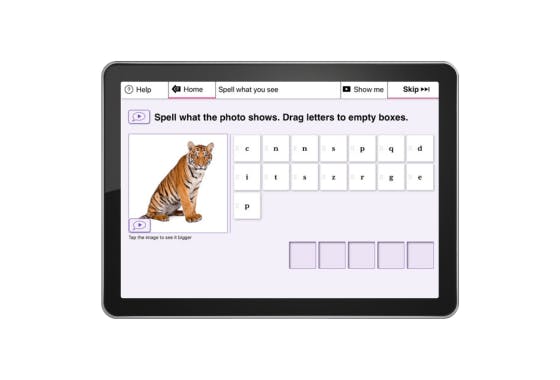
The CT Speech and Cognitive Therapy App was designed by speech therapists to help individuals with speech, language, and/or cognition deficits. Containing over 100,000 exercises, the CT app is a great way to continue working on speech therapy skills outside of sessions. This app is downloadable to any smartphone, making it easy for survivors to practice at any time.
While these tools differ from the adaptive equipment designed to help with self-care and leisure pursuits, they can be just as effective in boosting independence. In addition, FitMi, the Music Glove, and the CT app are all great ways to promote recovery through neuroplasticity.
Understanding Occupational Therapy Tools for Stroke Recovery
Occupational therapy tools for stroke patients can be an excellent way to increase independence with daily activities. While the list of occupational therapy tools for stroke patients is limitless, using adaptive equipment does have its pros and cons.
Adaptive equipment can help survivors achieve independence, but it may not contribute to regaining strength, coordination or range of motion. Recovery results from hard work and dedication to exercises and rehabilitation. Therefore, survivors should strive to find a balance between using adaptive equipment and practicing rehabilitative exercises to promote an optimal recovery.

